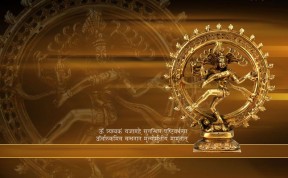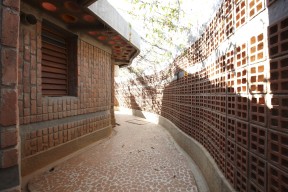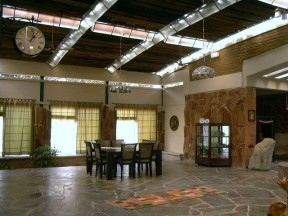I am an architect and a Bharatnatyam dancer and am fascinated with the relationship between the arts and architecture. And I have been on a fabulous journey to explore the connection between a static and a performing art since both complete me.
At the physical level, visual satisfaction is achieved in both dance and architecture. Words like rhythm, harmony, synchronisation, movement are not just used in dance but also relate to architecture.
Also all classical dances that exist in India today have a deep connection with temple architecture since temples were also performing spaces.
Special architectural spaces have been designed over the centuries for various dance forms, such as, the early rangamandapas in Hindu temples, the highly ornate Mughal courts for kathak performances, Koothambalam in Kerala, and the majestic ballet theatres in Russia. As a dancer, I could boldly say that the physical space in which we perform directly affects our performance!
“I have a deep sense of my body’s architecture … the skeleton,” says choreographer Trisha Brown in Her Prelude to the Royal Academy Forum which brought the worlds of dance and architecture together. She adds, “anatomy plays a significant role in both dance and architecture.The sheer movements of lines create a picture which delivers joy! The human body is the most important element of both dance and architecture.”
Lord Shiva’s Nataraja posture is the symbol of dance in Indian culture.
The shloka, “Angikam Bhuvanam Yasya Vachikam Sarva Vangmayam Aharyam Chandra Taradi Tam Namassatvikam Shivam, (I bow to the supreme Shiva whose body is the universe, whose speech is the sound, the stars and the moon his ornaments),” sums up the main aspects of dance, the four-fold abhinayas, Angika(expression through body), Vachika (expression through speech) Aharya (expression through ornaments) and Satvika(the refinement of the soul). Shiva is the embodiment of all these aspects. )
So dance is the imitation of our own inner and outer responses to emotional and physical stimuli, presented in sophisticated imagery and gestures drawn from body, mind and soul. At the emotional level, the evolution of dance is universally based on two desires, to mirror the stirrings in Nature and the catharsis of emotions. The same tendencies can be seen in the way we build. Architecture too is guided by seasons and emotions. We also copy natural forms in architecture.
There is also an element of spirituality in both. This shloka best exemplifies this, “Yato hastaha, tato drushtihi. Yato drushtis, tato manaha. Yato manas, tato bhavo. Yato bhavas, tato rasaha.” (Where the hands, there the eyes. Where the eyes, there the mind. Where the mind, there the feeling. Where the emotions, there is the essence of life or rasa.”
In 1996, choreographer Frédéric Flamand started reflecting on the relationship between dance and architecture as both arts structure space. For a project called ‘Moving Target,’ he chose to work with New York architects Elisabeth Diller and Ricardo. In 2000, Flamand created, ‘Metapolis’ in association with the Iraqi-British architect Zaha Hadid, winner of the 2004 Pritzker Prize, the architectural equivalent of the Nobel Prize.
Just goes to show that everything we create and express comes from the same source. Whether we dance or build, we are paying tribute to the fundamental human need for self-expression.
(Photographs Courtsey : Jaisim Fountainhead, Bangalore)









wow! Beautifully expressed! Have always felt an instinctive connection between the structure of classical music/dance with maths and geometry …by connecting them with Architecture you have brought it alive for me … really enjoyed reading this and have saved it.
Good writing Amisha!Liked the text and the pics:)
Thanks Parul and Mukta! It is a connection I have felt and wanted to share for a long time…..
I am a senior finance professional based in mumbai. I sometimes write and make films espicially documentaries.
Can i write in your e magazine… ?
best,
a fascinating journey into and with the built environemnt
A comment from one of the Gurus of Architecture Sri.Jaisim Krishna, your article has been appreciated well, good work, fit to be shared with many of the younger generations of Architects, who only dream of structures and miss out on adding the texture of culture.